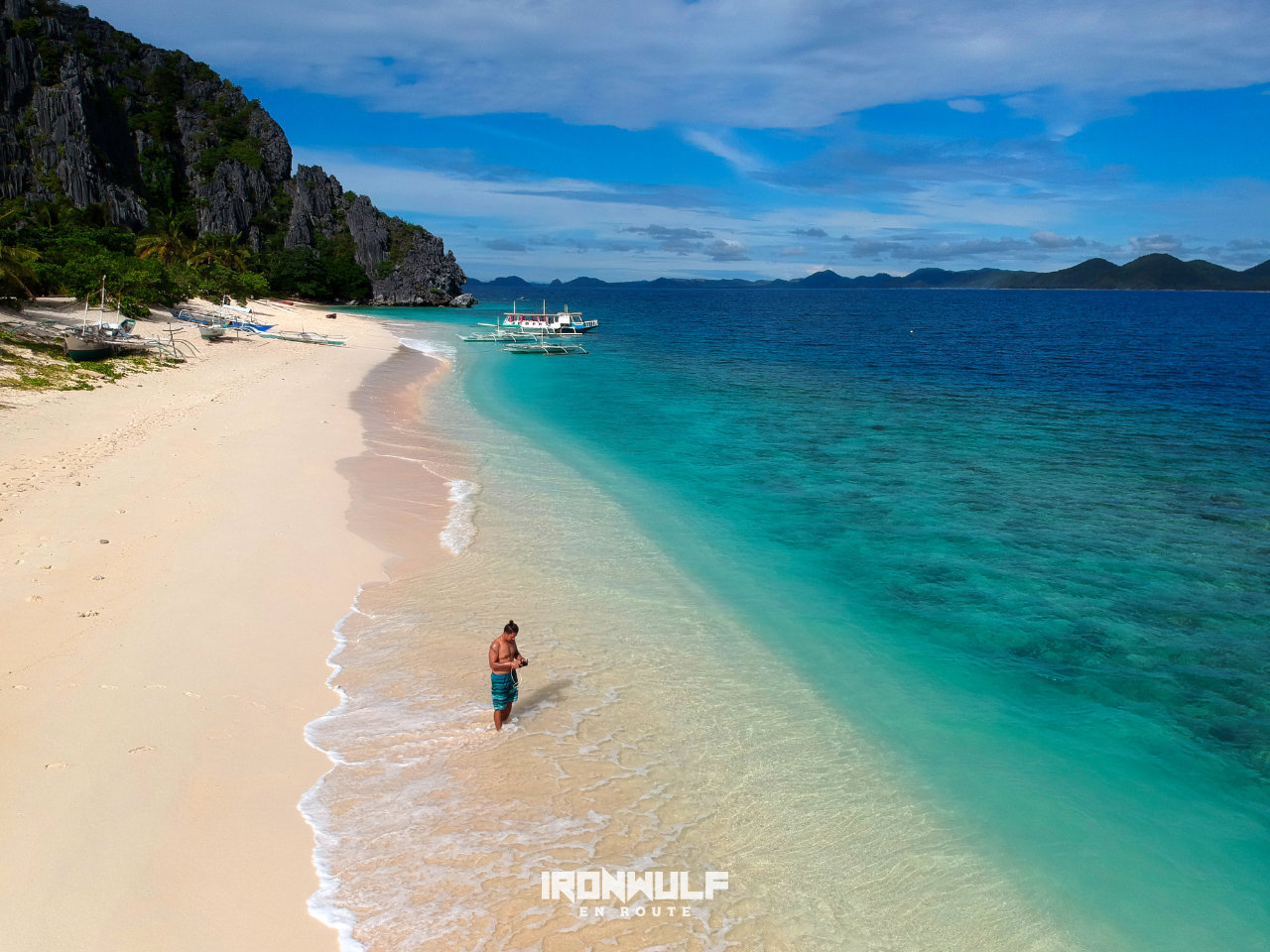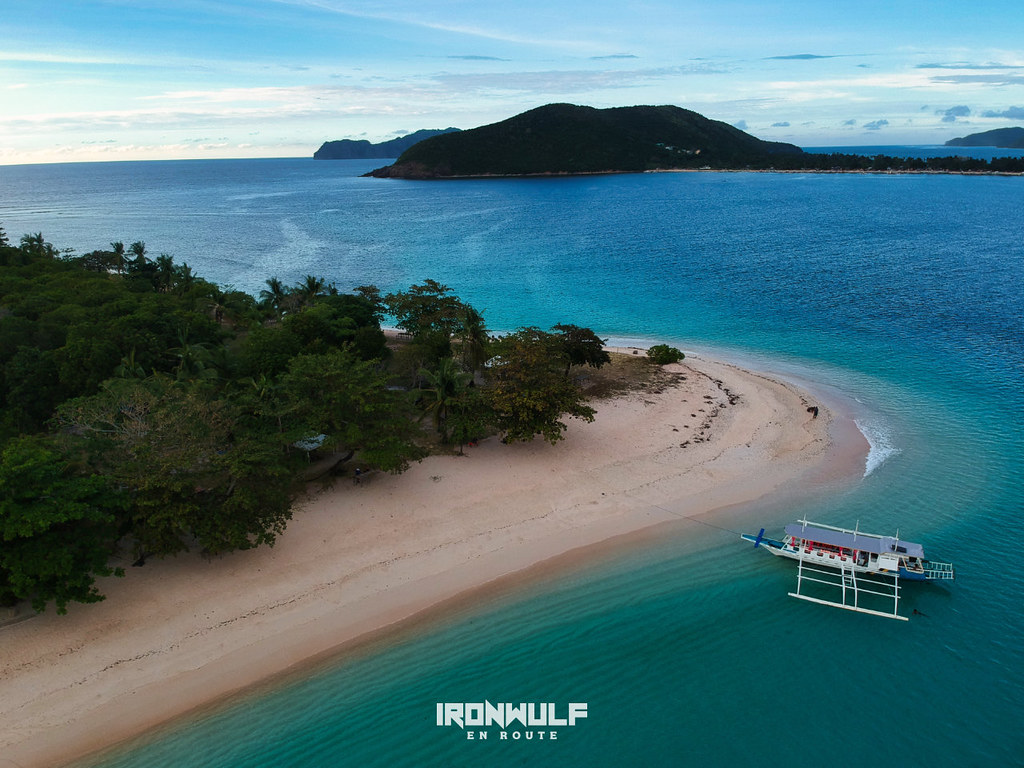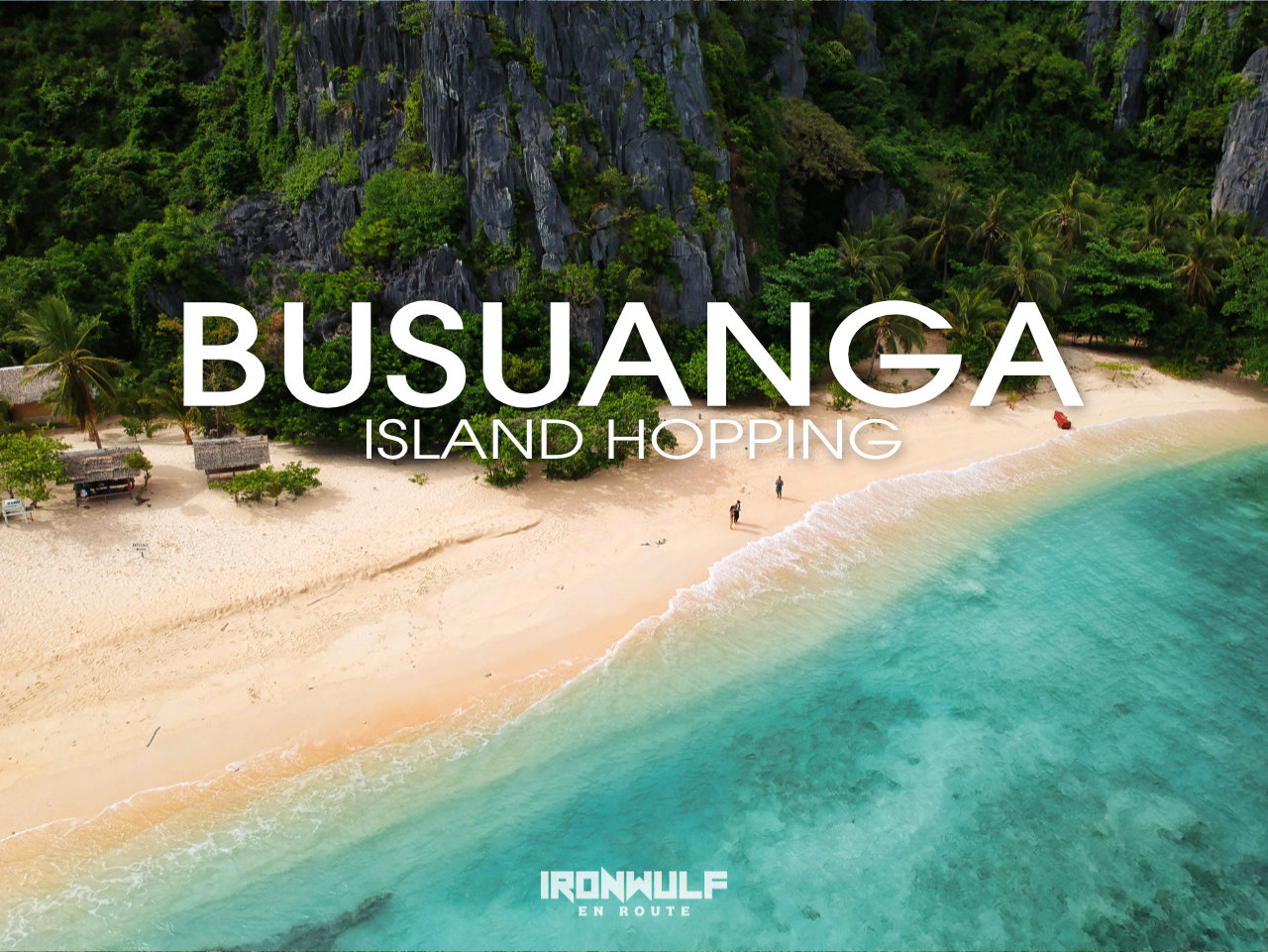A visit to the Calauit Safari Park is usually packaged with a Busuanga island hopping tour. Since they are basically in the same area, the tour is clumped together to maximize the time spent in Busuanga. With the safari tour completed by noon, our afternoon was spent on the islands of Malajon, Debotunay and North Cay islands. These islands in the west are also part of the Calamianes group of islands. Each island has unique characters of its own.

Malajon Island
Our Busuanga island hopping started at Malajon island or popularly known as the Black Island. The jump-off is at the port of baranggay Salvacion in Busuanga. The boat ride took less than two hours. The waves got rougher halfway as we were riding in open seas. The dark and imposing rugged limestone peaks looks intimidating from afar. The sliver of white sand beach beckons us in this rugged beauty.

Malajon island is managed by the Tagbanua indigenous people. The name is also a local term than means maitim or “dark”, describing the island. It was only when the Americans came in around 50s or 60s when they opted to call Malajon as the Black Island. It became popular by that name but honestly, the Tagbanua people still prefer that people call it Malajon. Pronounced as Mah-la-hum.
The island is uninhabited and is commonly used by the locals as a fishing stop. Collecting balinsasayaw (swiftlets) nest and guano (bat poop) are also a source of livelihood from the island.

Beauty of Black
The sand was a stark contrast from the karst formations. White and soft. Fine grained sands that feels good on the feet. Bright and sloping wonderfully to the cerulean sea. There was a light drizzle when we came but the clouds eventually gave in to the sun while we were there.
Healthy protocols were also implemented on the island. Hand-washing stations, temperature check and registration. They urge you to wear a mask and face shield. Though I suggested that face mask would be enough since we’re outdoors.

The large chamber cave with pool 
At the dark cave with crystalling formations
Aside from enjoying the beach, the waters and exploring one of the WWII wrecks just near the shore, there are other activities on the island. There’s a monitor lizard watching area if you’re fascinated with them. Then a couple of caves. The large bright chamber have several pools. Served as a shelter during the war. Then a dark cave with a few good cave formations.

Guest can stay overnight on the island. Camping or using the open cottages are available. There’s a new homestay house but not yet operational since they are fixing the water supply. There is no water source on the island so water are brought in from the mainland.

I love the island. Remote and exotic. It would have been great to stay overnight. But for now we moved on to another island.

Debotunay Island
Heading south, less than half-an-hour boat ride, we arrived at Debotunay island. A lovely heart-shaped island rich in foliage and surrounded by white sand beach. The sands though are large grained of crushed corals on most parts. I didn’t see any overnight accommodations aside from a few open huts. Lots of birds here too! Suprised to see a flock of ashy-fronted bulbuls here that seemed to be as common as the Eurasian tree sparrows. A few crows too. I guess it’s the density of the trees on this island that made it appealing to birds. We only stayed here for snacks and rode to the next island.

Sun Setting at North Cay Island
We rode further down south under foreboding clouds carrying rain. Yet there’s a glimmer of light on the western side casting hopes of a visible sunset. We arrived at North Cay island. A small island, almost an islet with minimal foliage and a few upscale cottages for overnight stays. The sand surrounding the island is a mix of fine to medium grain sands. The island is also called as Nagtenga or Pagtenga island. Probably a Tagbanua word.
The luxury private island but now closed, Huma island can be seen nearby. Drizzle finally came in when we arrived that most of the group had to find shelter under the trees.

I stayed by the beach. Observing and shooting closely a lone and skittish little Kentish plover at the beach. Then decided to take a dip while enjoying the setting sun amidst the clouds. Not worrying about the rain since I’m soaked already. Besides its all about beach and island hopping fun when doing a Busuanga island hopping tour.
Booking a Tour
For hassle free visit to Busuanga, it is best to book with a DOT-accredited tour operator. For our trip, we used Coron Blue Lagoon Adventure Travel and Tours.


Ferdz Decena is an award-winning travel photographer, writer and blogger. His works has found print in publications such as Singapore Airlines’s Silver Kris, Philippine Airlines’ Mabuhay, Cebu Pacific’s Smile and Seair InFlight. He has also lent his expertise to various organizations like the Oceana Philippines, Lopez Group Foundation, Save the Children and World Vision, contributing quality images for their marketing materials.
